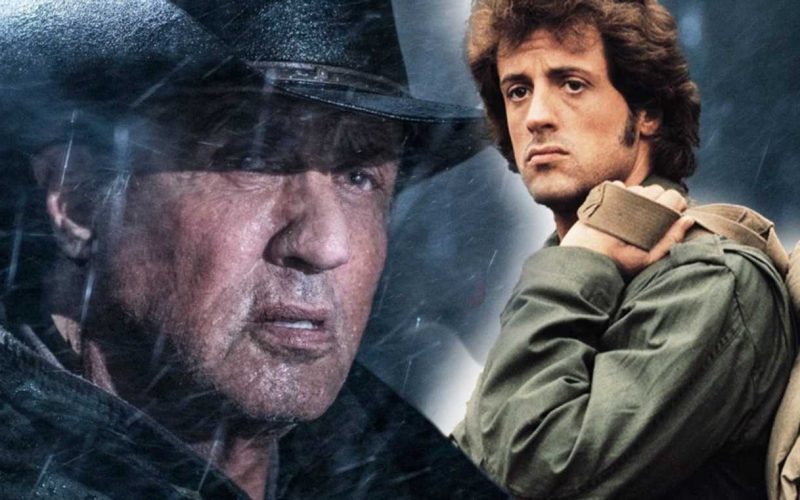Rambo: The Long Road to Last Blood.
After the career renaissance that 2006’s Rocky Balboa had given Sylvester Stallone, it remained to be seen if the reintroduction of of Sly’s other iconic character would have the same success. In many ways the trajectory of both the Rambo and Rocky films follow the same path in the way both franchises start as relatively gritty and dark character studies of a man completely adrift in life, but progressively get more and more far fetched in subsequent chapters.
Rocky Balboa’s first appearance featured a man who had almost given up on himself, prior to receiving the offer to completely turn his life around. A classic piece of 1970s cinema no doubt, it was also a good old fashioned underdog tale that would provide inspiration in its heart warming story of underdog triumph, loveable central character and ultimately happy ending (of sorts).
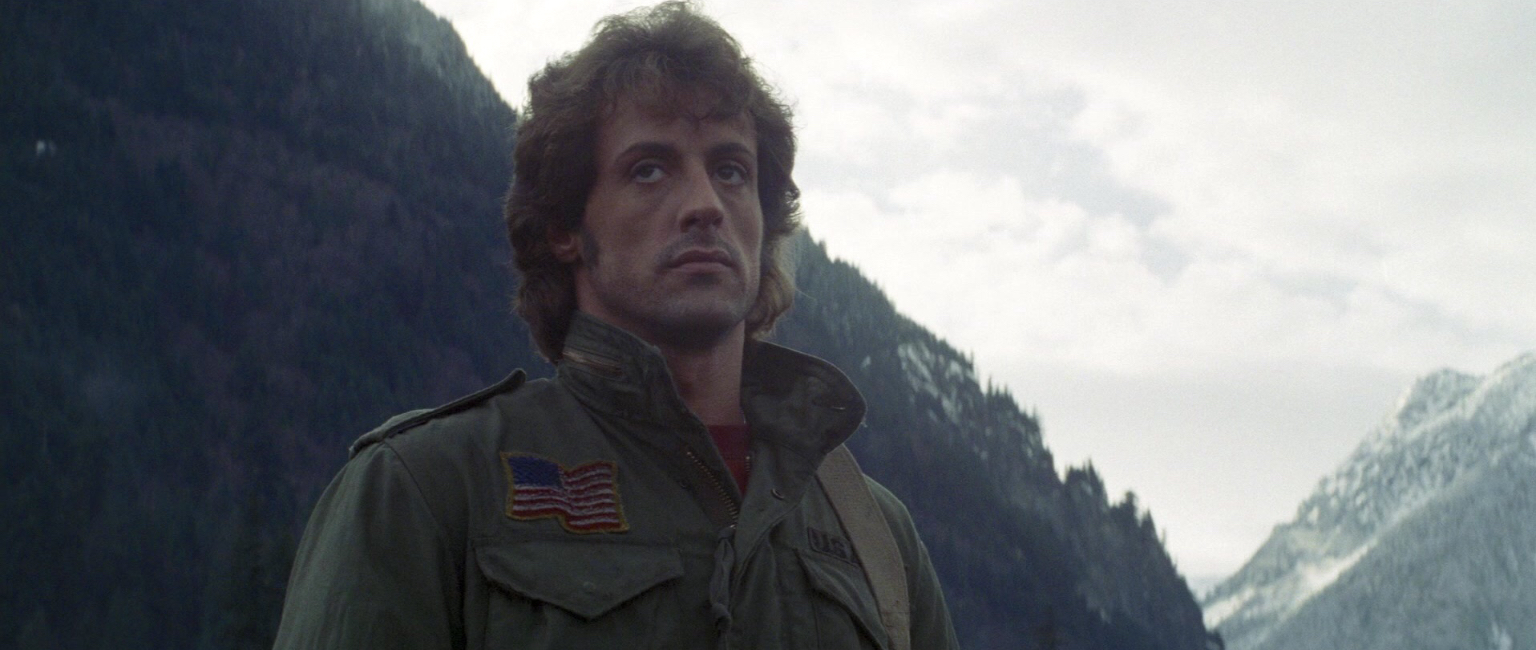
Rambo’s first outing would, on paper at least, be a harder sell. Although First Blood was rich fruit for the picking, financially speaking, after Stallone’s first foray, the character’s origins were more darkly harrowing and he had a long way to go to before becoming something of an exaggerated beacon to the ‘80s action genre.
The John Rambo that we were introduced to in 1982’s First Blood was a far tougher sell for building a successful franchise. A grizzled Vietnam veteran, suffering from PTSD and taking out a small town’s police forces (plus most of its small businesses) doesn’t exactly spell out sequel material after all.
In fact it’s well documented by now, but it was initially intended that the character would die at the finale of First Blood, as he had in the David Morel written novel on which the film is based and the death scene was even filmed, albeit slightly differently to that of its source material. In Morel’s novel, Rambo begs his former commanding officer Colonel Trautman to end his life, pleading to him;
“You trained me, you made me, you’ll kill me. You owe me that.”
Whilst Trautman initially tries to refuse Rambo’s plea, when the sobbing veteran presses the gun barrel to his stomach, the Colonel pulls the trigger, blowing away his former star pupil. The filmed scene is slightly different with Rambo snatching at the pistol so that Trautman will fire the killing shot almost by automatic reflex. Giving the ageing warhorse no other option and almost an excuse to appease himself. This act falls in line with the screenplay that Stallone had crafted to try and make Rambo a more sympathetic creature to the viewer. Morel’s book had been heavily optioned throughout the 1970s passing through the hands of several studios with stars such as Steve McQueen, Paul Newman, Clint Eastwood, Robert De Niro, Nick Nolte, John Travolta and Dustin Hoffman all previously said to be attached to the role at one time or another. Al Pacino was said to be considered for the role but supposedly turned it down when his request that Rambo be more of a madman was rejected. It was only when rights were bought by independent producers Mario Kassar and Andrew Vajna that Stallone became a contender for the role and that wasn’t exactly plain sailing, with the actor/writer initially passing on it in the belief that the project had been through too many hands already with over 26 drafts of the script already completed.
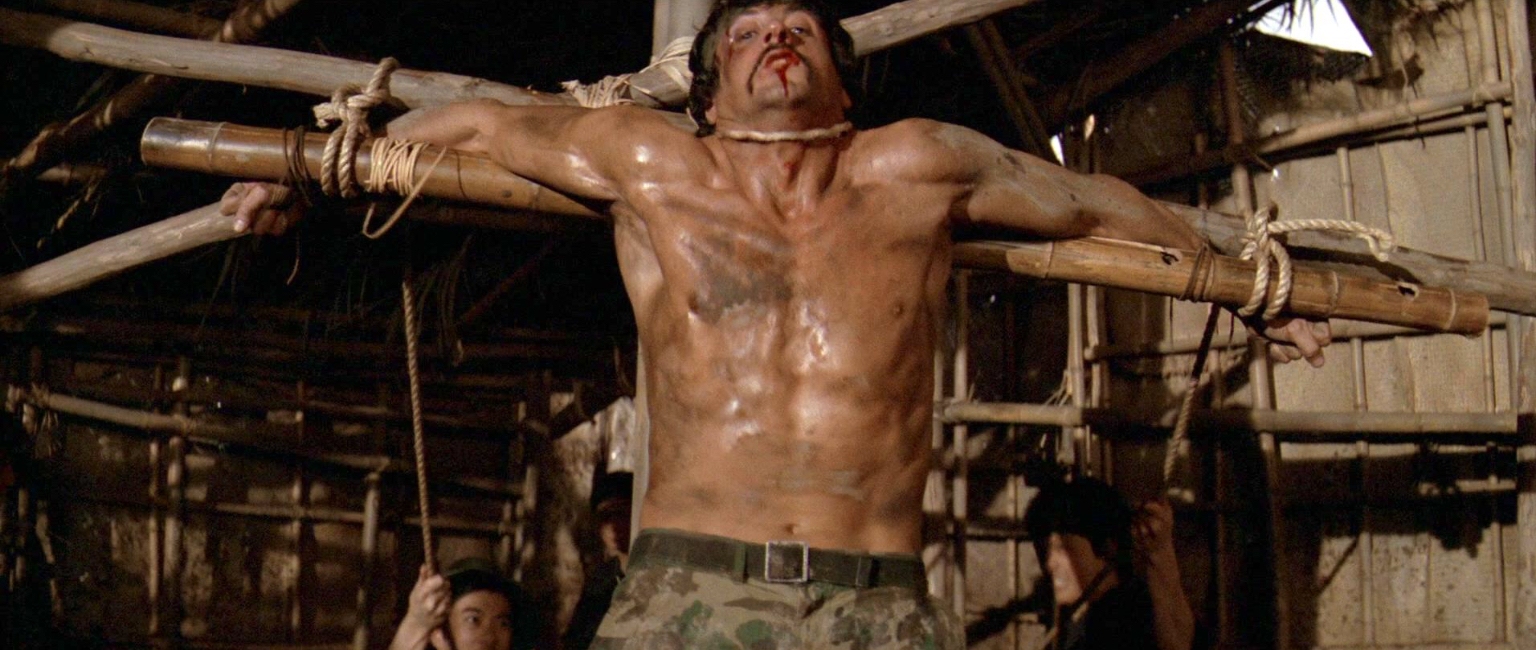
Morel’s Rambo, as written, was a lot more cold blooded in his actions than the version we eventually got to see. Although Stallone may have been hesitant to commit to the role when it was initially offered, he of course accepted it when he was offered the opportunity to rewrite the screenplay in order to make Rambo more sympathetic as opposed to the crazed madman the character resembled in the novel and subsequent draft scripts. Much like his re-write of the original Rocky character, he understood that he needed to give the audience more to absorb than simply a killing machine on a vengeance filled rampage, and this was reflected in the lower body count in the finished film.
In fact, Rambo doesn’t actually kill anyone in First Blood — he only wounds the people trying to hunt and harm him. This was a conscious effort on Stallone’s part in his script to change the characteristics of Rambo into more of an underdog as opposed to the character in the book who simply goes on a wild killing spree. Stallone rightly felt that this would alienate the audience from him, so we only actually get one death. The one character who does die is Deputy Galt, who after locating Rambo, hanging for his life on the face of a mountain then attempts to kill him with a high powered rifle. Even after surviving a perilous fall, the unarmed fugitive is still under fire and can only retaliate by throwing rocks at his would-be killers transport causing the gung-ho officer to plummet to his demise as he loses his balance and falls from the helicopter rather than Rambo intentionally killing him. Rambo even goes so far as to appeal to the remaining officers that he doesn’t want any of them to suffer the same fate and that they should just let him go.
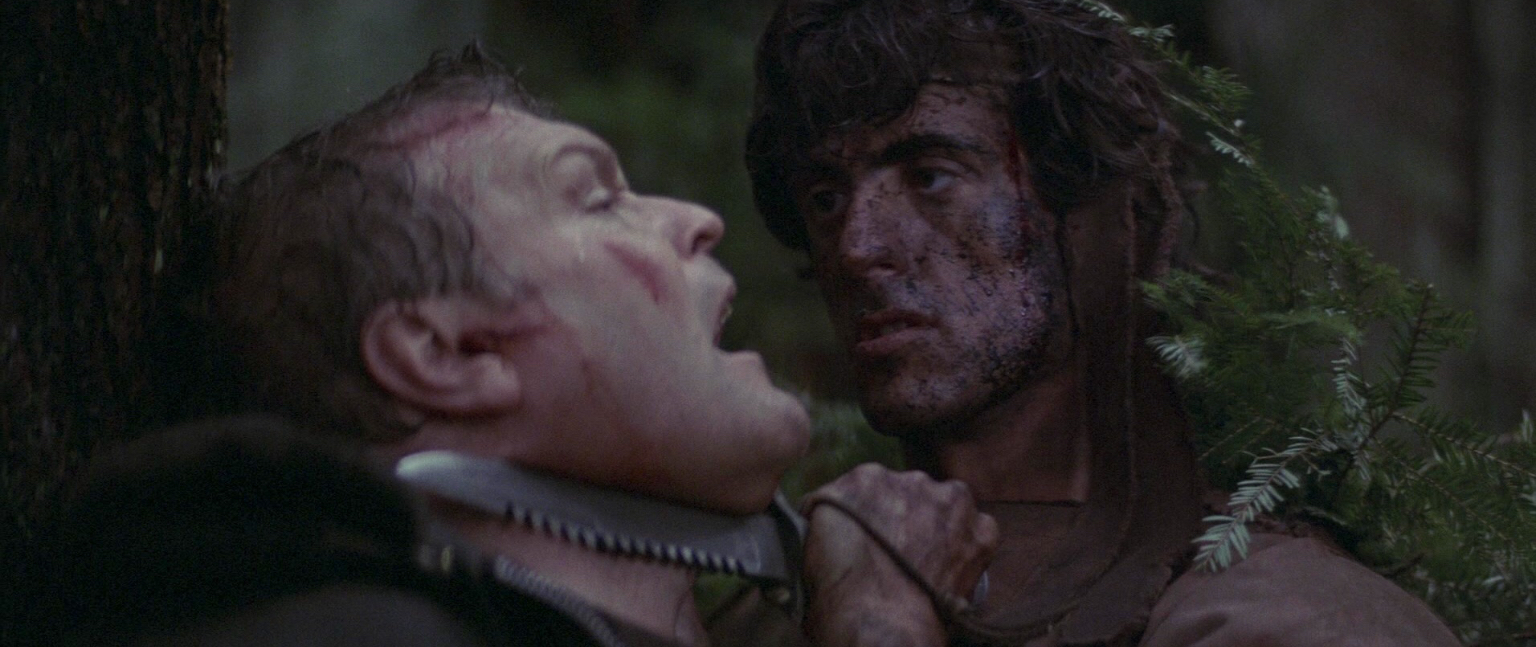
The response to the film’s opening proved to be a wise decision on Stallone’s part with First Blood being Stallone’s first non-Rocky movie which didn’t bomb. In fact, it could be argued that it effectively saved his career with cinema audiences finally accepting him in a role that didn’t involve a boxing match. This must have been a major decision making factor with his return to the role, with Rambo: First Blood Part II. Stallone had already began to ramp things up with Rocky III and 1985 saw not only the introduction of Ivan Drago and the Soviet Athletics Association’s steroid fuelled assault on the Heavyweight Title, but also the return of John Rambo in a far more spectacular action vehicle. It sees Rambo being offered the chance not only to regain his freedom from prison after the events of First Blood, but also the chance to kick some communist ass, whilst at the same time rescuing American Prisoners Of War. Teenage me was sold but it’s not a film that has really aged as well as it might have in retrospect. Although the nuance of the character is still there to some degree, as the film progresses it’s more likely than not that the viewer begins to forget the origin of the character and is swept away by the often over the top action.
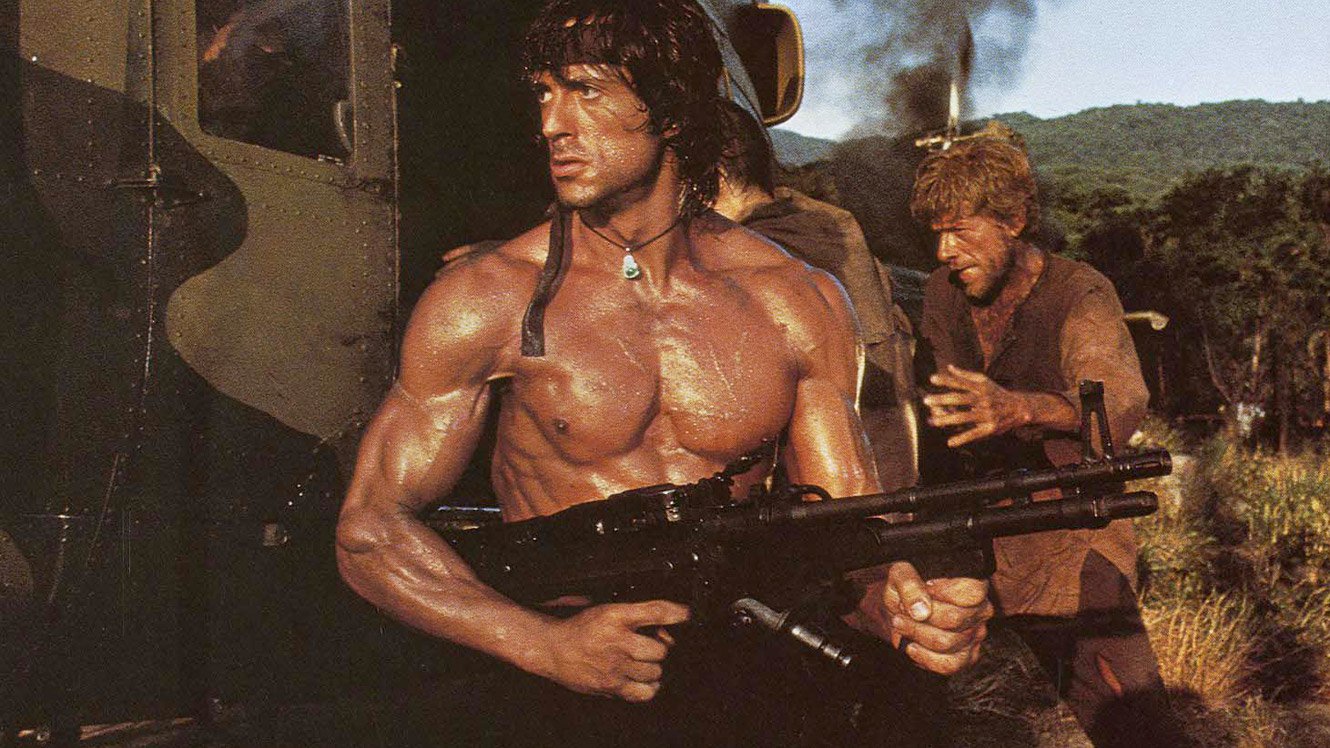
Thankfully Stallone saw the need to keep reminding us of the origins of the central character’s motivation, thus intrinsically tying it to the first film, with John Rambo coming to terms with the fact that his country will never understand him. As much as I can pick fault with certain scenes, it’s still a film that will continue to sit on my DVD/Blu-Ray shelf and shall remain there. As a time capsule of the decade in which it was made, it has more than earned its place in the pantheon of great ‘80s action films.
Rambo: First Blood Part II is a film that I still enjoy mostly because I am willing to allow it certain concessions, as I do with the middle films of the Rocky saga, films that I binged on as a youth. Interestingly, the original story for the sequel was remarkably different. Written by James Cameron and titled First Blood II : The Mission, of Cameron’s original script, Stallone would later remark,
“I think that James Cameron is a brilliant talent, but I thought the politics were important, such as a right-wing stance coming from Trautman and his nemesis, Murdock, contrasted by Rambo’s obvious neutrality, which I believe is explained in Rambo’s final speech. I realize his speech at the end may have caused millions of viewers to burst veins in their eyeballs by rolling them excessively, but the sentiment stated was conveyed to me by many veterans. [Also] in his original draft it took nearly 30-40 pages to have any action initiated and Rambo was partnered with a tech-y sidekick. So it was more than just politics that were put into the script. There was also a simpler story line. If James Cameron says anything more than that, then he realizes he’s now doing the backstroke badly in a pool of lies.”
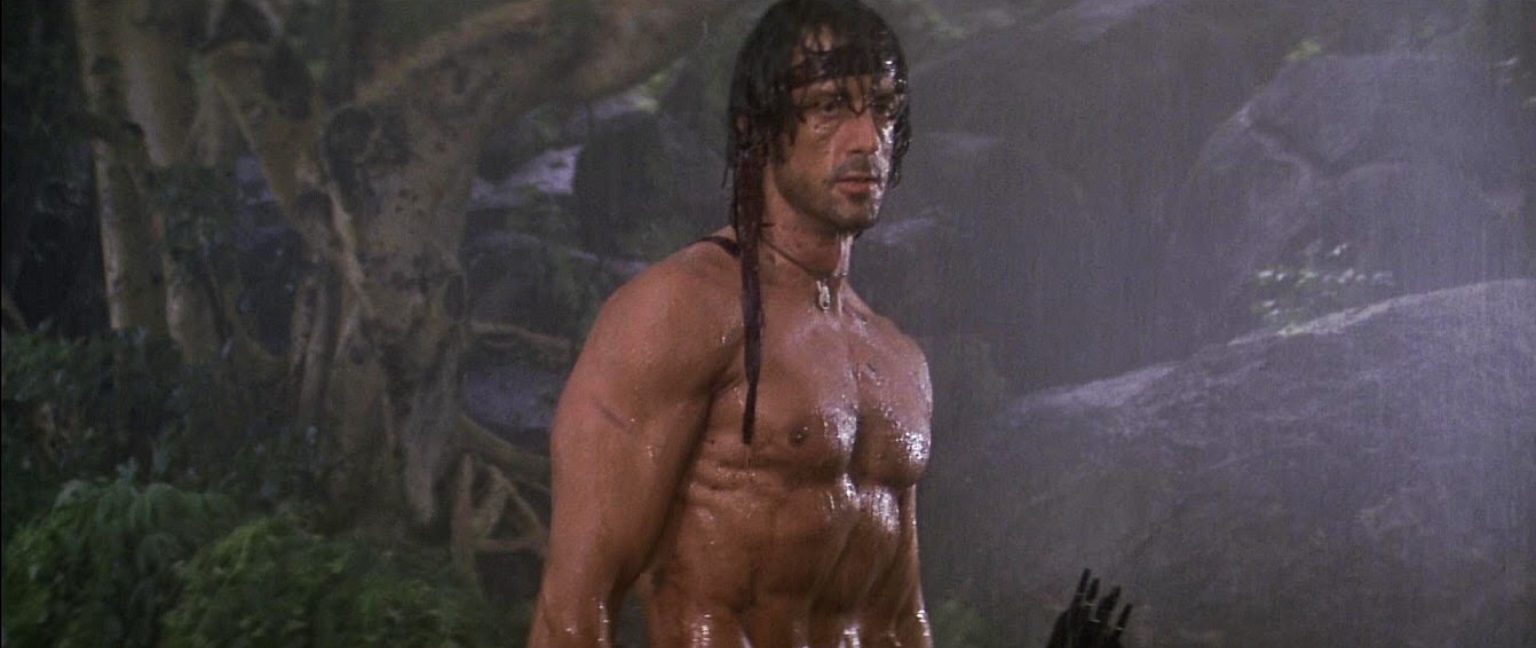
It could be confidently argued that Rambo: First Blood Part II serves more as a blueprint for action movies to come. Not that I am adverse to such spectacle, more that I was left slightly dissatisfied upon a recent double bill viewing of the first two films. Of the first two films, First Blood has and always will come out on top for me.
By now Rambo was a brand of his own (I won’t say too much about the Rambo children’s cartoon that ran for one season in 1986) and of course, this would mean that his continued adventures would be served up to us in the form of 1988’s Rambo III.
First Blood was so far removed from the character by now that it didn’t get a mention in the title, admittedly, Rambo II: First Blood Part III would have been something of a mouthful. Stallone’s co-Star Richard Crenna (Col. Trautman) may have been going a little far when he described this third instalment as “Rambo of Arabia” when it’s more the Rocky V of the series. I can’t help but think that the film lost the essence of what made the character the man he was and instead just focused on upping the ante with the explosions and gunfire. Of course such tropes will always feature in a Rambo film but the viewer needs their investment in the person who’s taking part in the action. It needs weight and unfortunately Rambo feels more like a straight to video rip-off. The first two films feature Rambo as a good, but damaged man, repeatedly being let down by his country and it’s government. A man who, at a young age, was tossed into to the lion’s den in the name of American world domination, whilst it was flying the flag of a peacekeeping force.
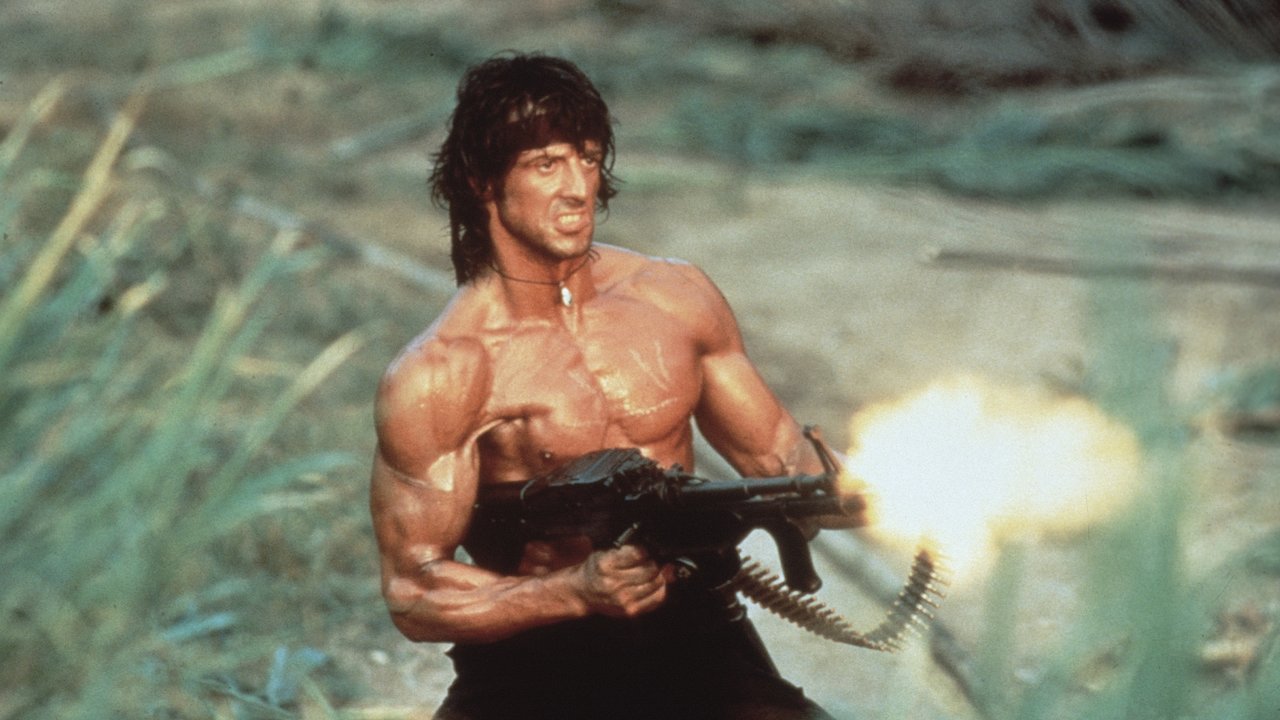
This idea is pretty much undone almost at the start of the third film with Trautman telling Rambo that he was always a killing machine and that the military just smoothed out the rough edges so he could complete his life’s purpose. When Rambo refuses what you’d expect most PTSD suffering, jaded Vietnam war veterans to do, in this case helping arm rebel forces in a foreign land combat a communist regime in the name of America, one can’t help but think that this plan sounds an awful lot like the war that created John Rambo’s fierce warrior persona in the first place.
Inevitably after John’s refusal, his former commander takes on the mission himself, despite the fact that Crenna looks and moves more like a spritely grandfather by this stage than a man that you’d confidently drop behind enemy lines. Trautman is, unsurprisingly, captured almost immediately and then spends much of his time working as a hype man for his former pupil, telling his Russian captors that Rambo is a bigger threat than God as at least the Lord would show mercy.
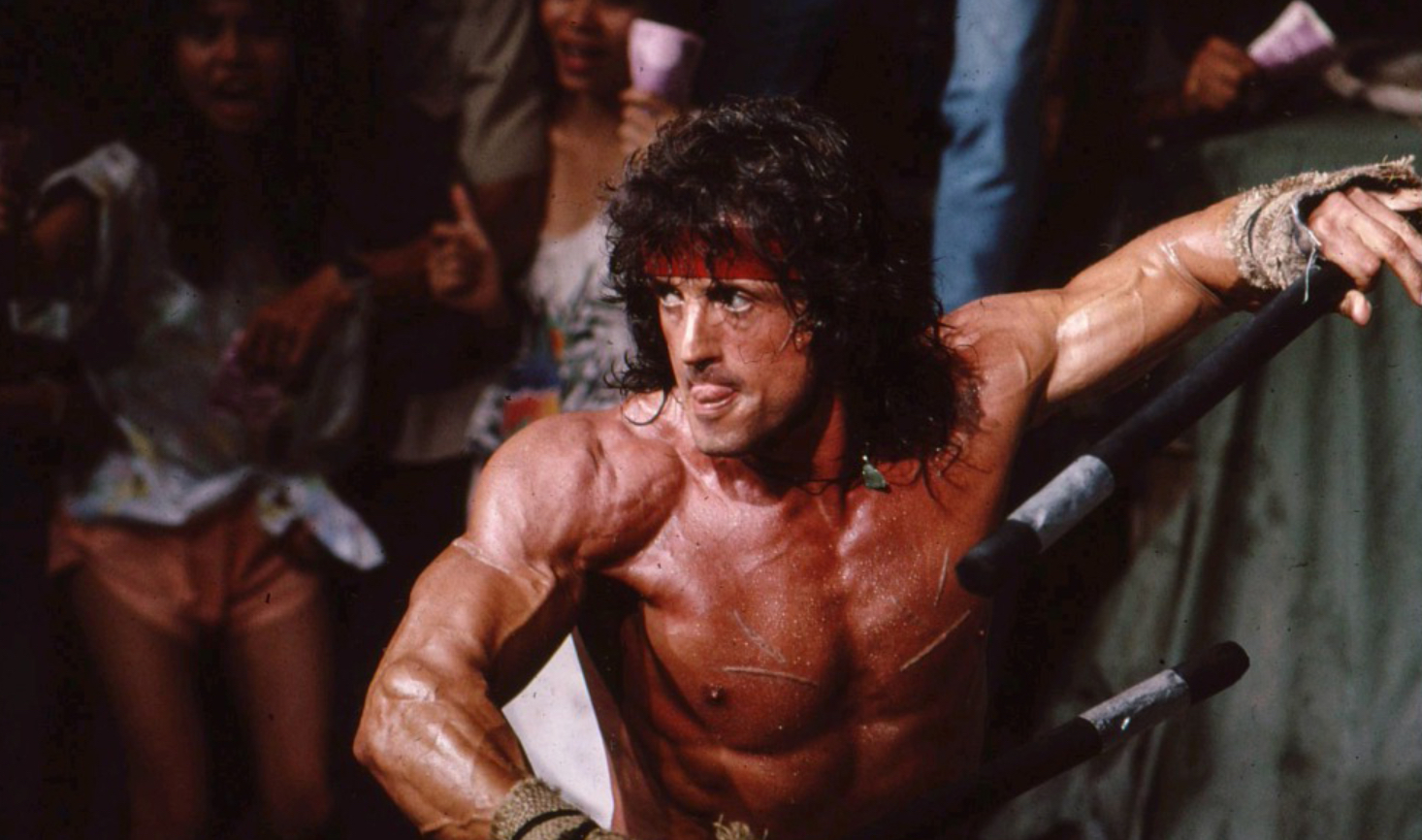
The last act of the film turns into an overblown action double act, with Trautman as the straight man to Rambo as he suddenly develops a sense of humour and wise cracks with his co-star in a manner that suits Stallone’s later character, Ray Tango far more than it does John Rambo. Director Peter MacDonald later said, “I tried very hard to change the Rambo character a bit and make him a vulnerable and humorous person, I failed totally.”
Although the film didn’t flop and was actually the second most profitable of the series. Overall, it grossed $53,715,611 domestically and then took $135,300,000 overseas, giving Rambo III a box office total of $189,015,611. It remained to be seen where the character could go from here and whether Rambo would even be able to now fit into the changed cinematic landscape of the action genre. The release of Die Hard that same year seemed to clear the way for a more relatable and realistic lead than the muscle bound Goliaths played by Arnie and Sly that had dominated the genre up until this point in the ‘80s.
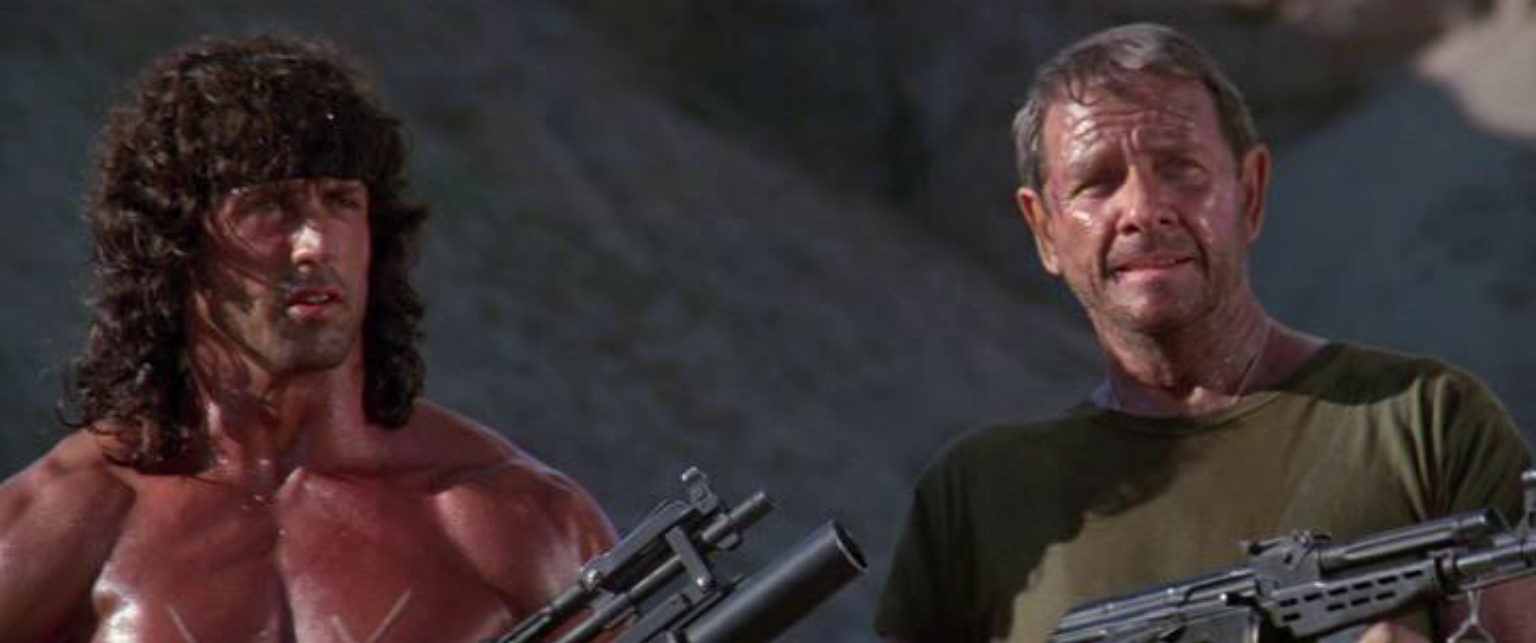
The release of Lethal Weapon the year before had also pushed the buddy cop element of action films to the fore and it seemed as though the one man army type of action film character had gone as far as it reasonably could. Rambo was now even rich for parody with the release Hot Shots: Part Deux in 1993, in which Charlie Sheen’s Topper Harley pulled out of the cockpit (pun intended) to easily lampoon the Rambo films. Richard Crenna even semi reprised his role of Trautman as Harley’s mentor.
In many ways the Bond franchise suffered the same fate with the Austin Powers series, with the Bond films almost becoming a cliche of themselves with their familiarity proving a fruitful harvest for pastiche. Of course their response was to reveal a darker and stripped back Bond in the films of the Daniel Craig era. Maybe this was something of a blueprint for Stallone when cinema audiences were treated to Rambo’s return in 2008 but I’d liken it more to what he’d done with Rocky Balboa in 2006, the irony being that Stallone’s original intention was to bring Rambo back first, but he put the project on hold when MGM green-lit the comeback of The Italian Stallion.
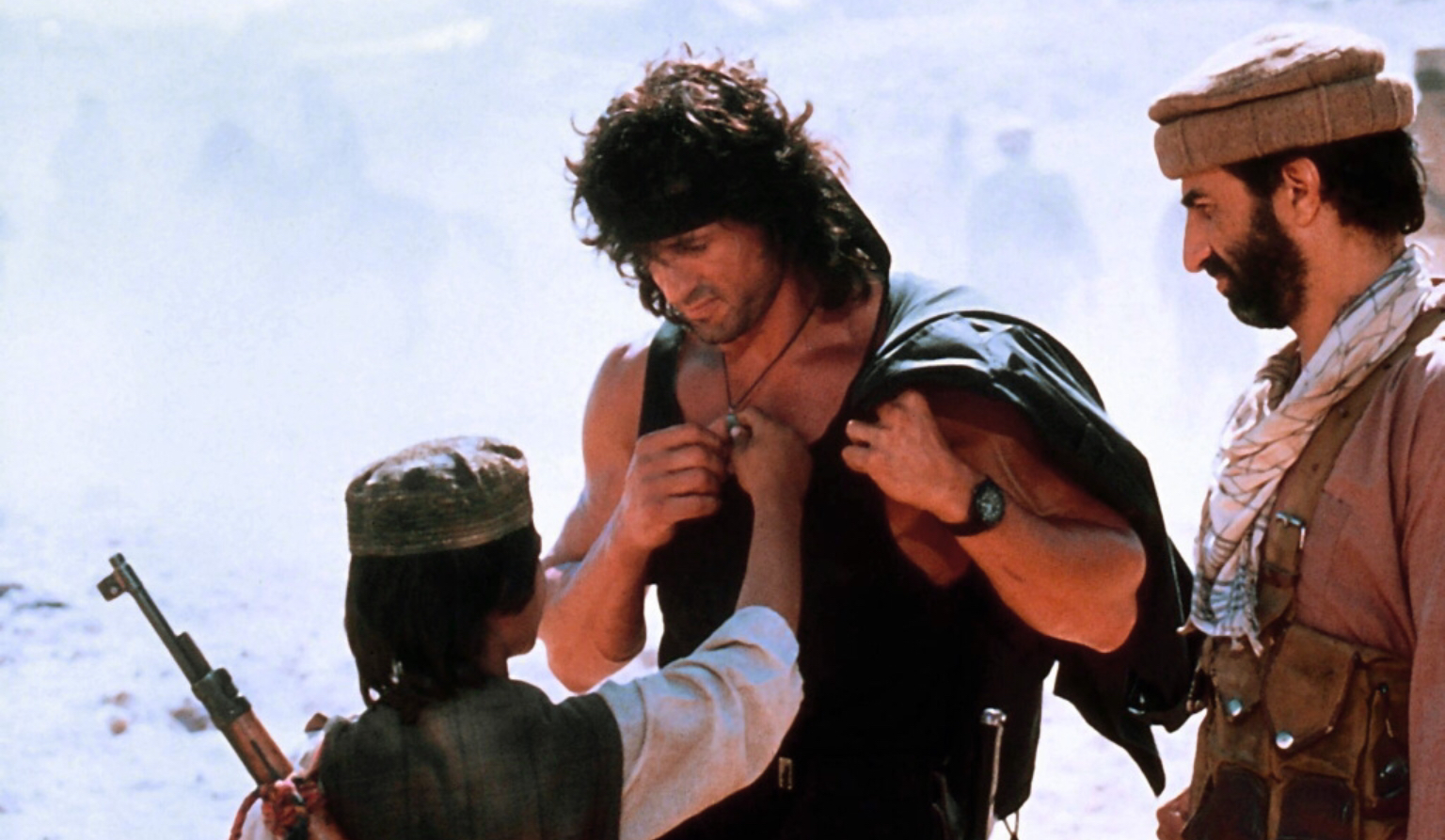
Many fans, myself included, were delighted to see not only Balboa back, but the return to his roots, that the film encapsulated. Although perhaps more in control of the Rocky series in general, Stallone also had a heavy hand in the development of the new Rambo story, and this rebirth would see even more of Stallone’s influence over the project as for the first time (officially anyway) Stallone’s still sculpted physique would also be filling the director’s chair for the first time on a Rambo film, although during different points in the film’s development, Luc Besson, Richard Donner and James Mangold had been considered for the job.
Ideas for the script had ranged from the rather modest idea of a settled down Rambo now living in the countryside with a new life only to be forced back into action, taking on White Supremacists who kidnap his family. While another far more outlandish premise would have found Rambo trying to stop a hostage situation at the United Nations, where he’s working as a diplomat when terrorists (including Rambo’s adopted son) take control of the UN headquarters in New York.
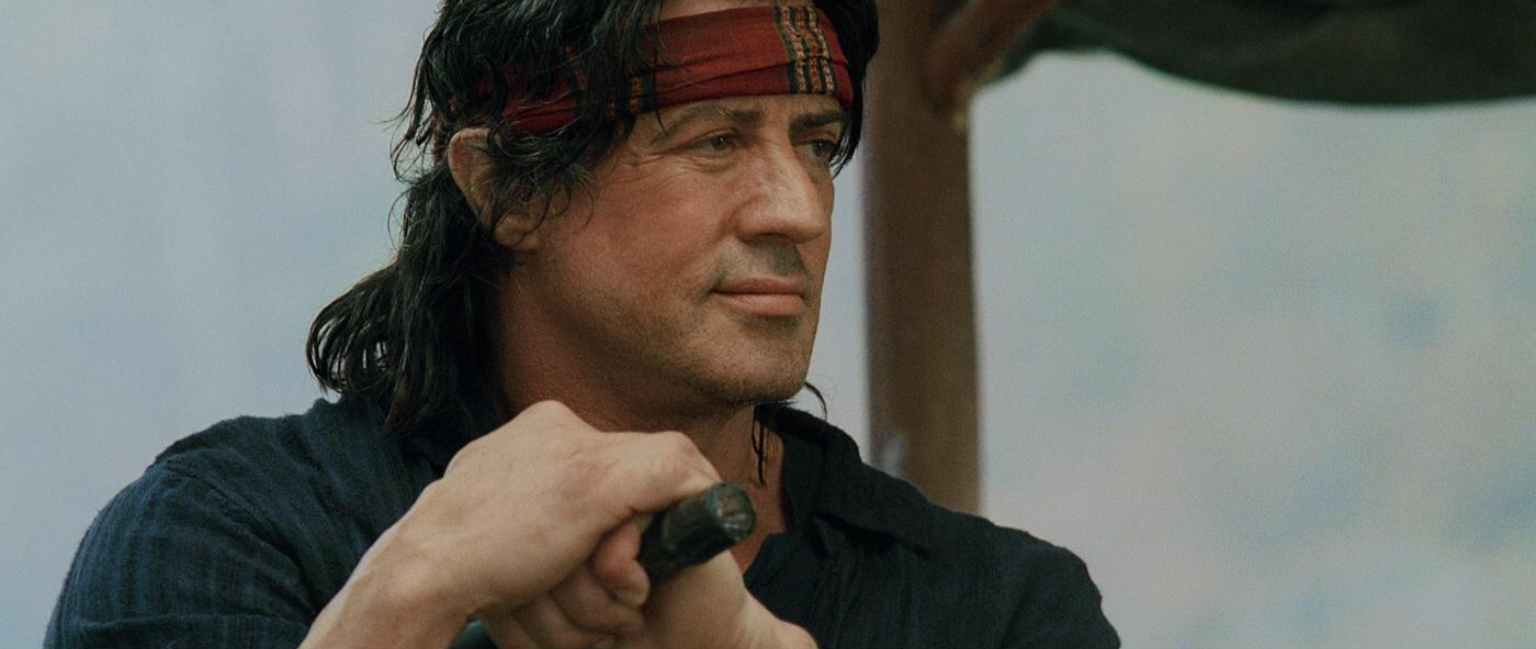
What Stallone eventually settled on was the winning formula of a mix of both the first and second films. With hindsight, what Stallone did consecutively with both of his most iconic characters was nothing short of brilliant but also a result of lessons learned from his follies in the past with the later chapters of each respective saga. By taking the character of Rambo back to his roots and simply showing how the rest of the world had changed around him, he provides the character with the need to have a story worth telling, rather than the almost comic book superhero that we were presented with in the third instalment. Simply titled, Rambo (or in countries such as Germany and France where First Blood had initially been released under the same name, it was titled John Rambo)and it was a return to form for the now aged former Green Beret.
Rambo is shown as a man still without any real home. A man who simply wants to hide away from the world but still feels uncomfortable if he is too far away from conflict. As a simple ferryman working on the rivers of the Burmese border in Thailand, he’s also someone who still needs the adrenaline rush of capturing deadly snakes for a little extra cash. Always silently keeping anyone from approaching him too closely with his surly demeanour and deflecting, thousand yard stare. A lack of trust in the fairness of humanity has prevented him from forming any real bonds or friendships, he’s very much a casualty of his own personal war in this sense. When he’s first offered the chance to bring humanitarian aid to war victims he steadfastly refuses to assist. When asked why he doesn’t want to help the world, his simple reply of “Fuck the world” says enough. He’s given up on the world as to him it will never change and will always be caught up in a perpetual cycle of war and killing. Why should he feel that anything he could do now would change that?
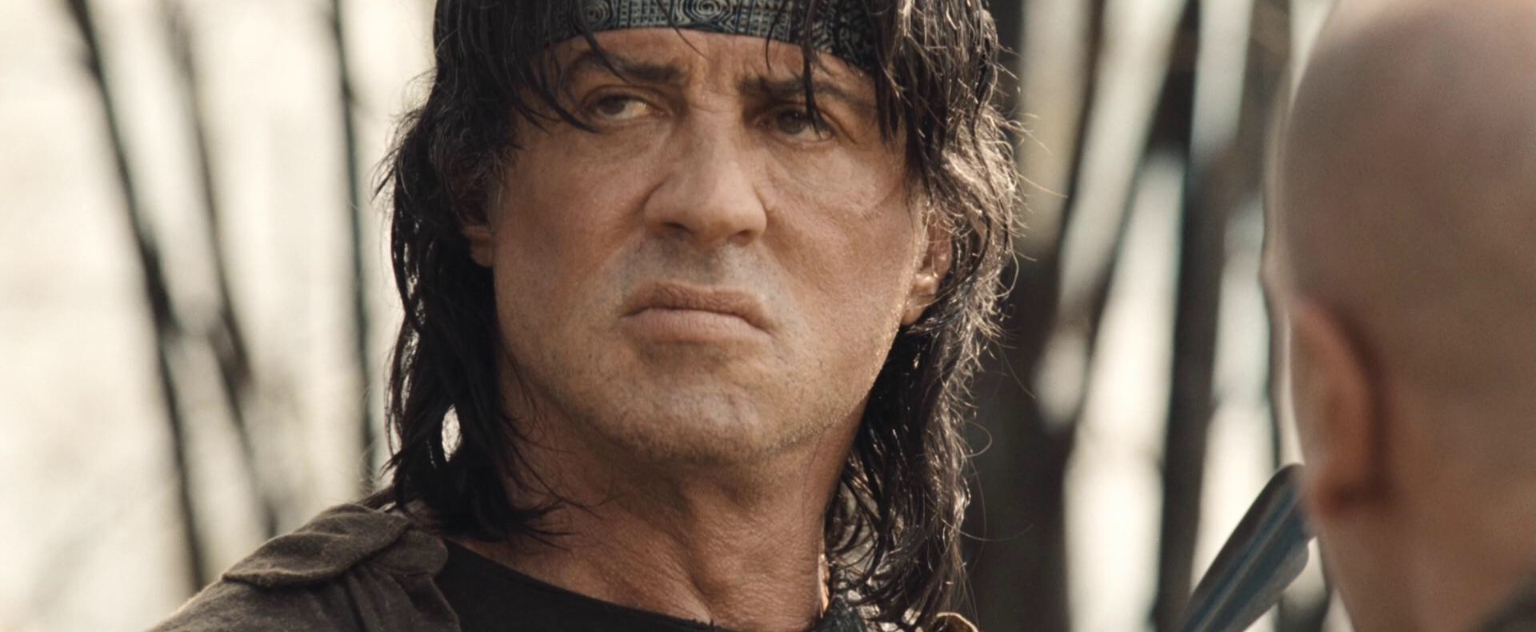
Of course the story continues with him eventually being not only persuaded to transport the humanitarian group into Burma, but he also finds himself feeling responsible for their eventual rescue from their captors when he’s approached by the Pastor responsible for sending the group in the first place. Interestingly Stallone originally considered brining Colonel Trautman back into the story at this point to appeal to him to go on one last mission and at one point James Brolin was attached to play the role due to the fact that Richard Crenna had died of pancreatic cancer in 2003, but the idea was eventually quashed with Stallone coming to the conclusion that the character had died the same day as Crenna, who still appears in an archival flashback in a fitting tribute. Similarly the passing of composer Jerry Goldsmith meant this would be the first Rambo film without the legendary composer’s input, but new composer Brian Tyler pays huge respect throughout his score to Goldsmith’s iconic theme.
The fourth chapter of Rambo’s story is a stark reminder of the true cost of war. Far more visceral and realistic in its representation of combat and violence than the two films that preceded it. Whereas the films had never been family friendly by any stretch, Stallone’s direction employed a far more graphic representation, with limbs being blown off, heads exploding and all manner of blood splatter flying in all directions. Whilst this drew criticism from some corners, I would hold some of these scenes in the same regard as Spielberg’s opening stanza to his epic World War II drama, Saving Private Ryan. Warfare is a brutal spectacle to witness, but I believe the more visceral the representation the better, otherwise you risk it seeming cartoonish and something possibly to be celebrated. Violence is ugly and Rambo doesn’t shy away from portraying it as such.
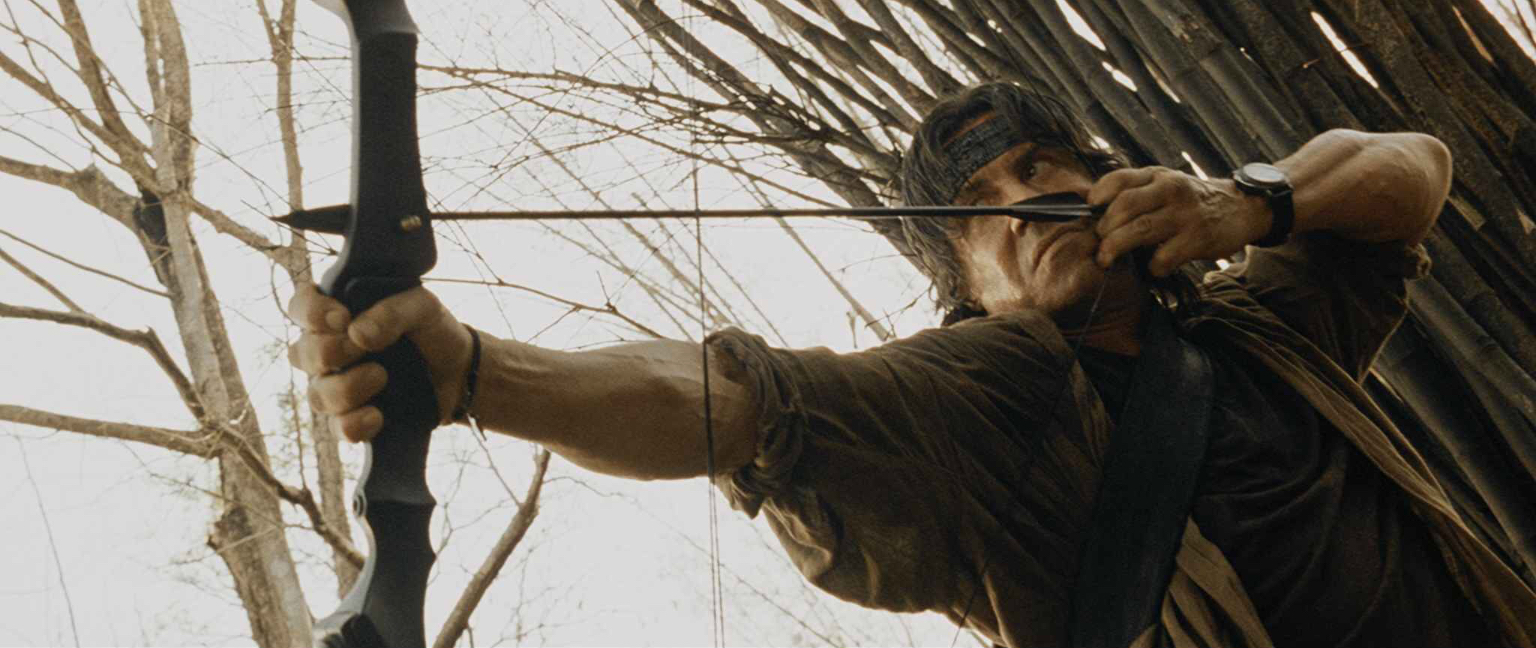
Stallone stated that he made the decision to set the film in the midst of the most brutal ongoing real world global conflict which had seen little attention being paid to it by the public or the media. He ruled out other established conflicts in the Middle East, Latin America and Africa after he’d spent time talking with international experts who told him about the Burmese Junta’s mass murder of the Karen people and this cast his mind back to the brutal Vietnam war that had created the character in the first place and he knew then that he had to set Rambo’s fourth outing in the midst of this genocide. Burmese Freedom Fighters later even adopted dialogue from the movie as battle cries, most notably “Live for nothing, or die for something.” Stallone said “That, to me, is one of the proudest moments I’ve ever had in film.”
Interestingly, the addition of a band of mercenaries being present alongside Rambo also allows an insight to his days back in Vietnam, as he slowly wins the trust of each of the men that fights beside him, whilst still allowing the titular character to come full circle by the climax of the final brutal battle. He now realises that he was needed, if only for one last time, to harness what had lain deep inside him for the last two decades. His war has finally ended. He can go back home.
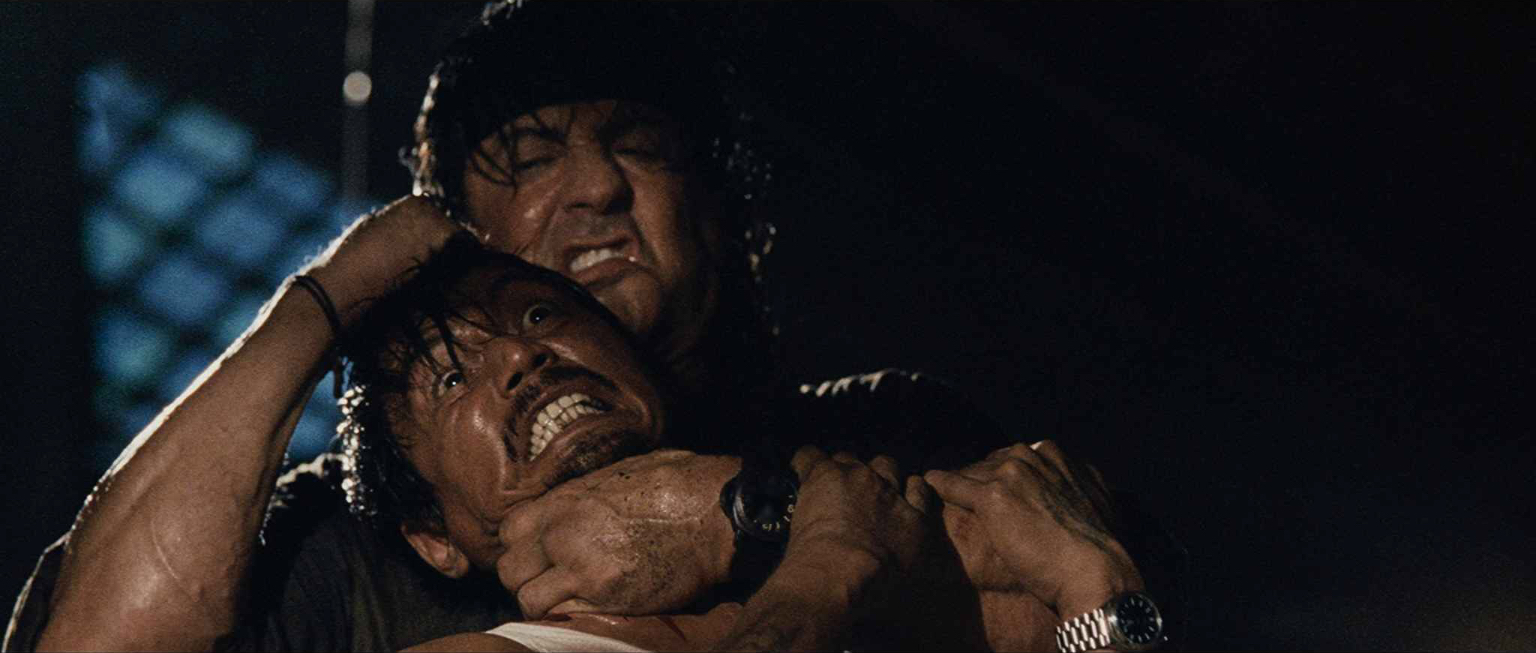
Few actors are lucky enough to land such an iconic role that it will stand the test of time and create an ongoing series of films, spread across several decades let alone do it twice. There are of course other examples, Harrison Ford for one, but who else not only hit the jackpot twice in such a fashion, but also personally played such an important part in the resurrection of those franchises when many had written them off? It’s testament to the creative grit and determination of Stallone, that same determination he had when peddling his Rocky script around all those years ago.
2008’s Rambo wrapped things up pretty perfectly with Rambo finally returning home. It left things open with no comforting coda but the manner in which it ended was suitably ambiguous. It remains to be seen if the fifth film, Rambo: Last Blood which opens this week, will offer anything new to the series but stay tuned for our verdict on what will likely be the final outing for the iconic action hero.
Rambo: Last Blood opens in the U.K. September 19th & the US the following day.

